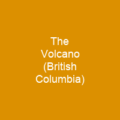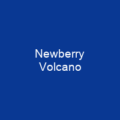Discovering Mount Melbourne: A Volcanic Gem in Antarctica
Imagine a towering ice-covered volcano standing majestically in the heart of Antarctica, its summit caldera filled with snow and volcanic ejecta. This is Mount Melbourne, an enigmatic stratovolcano that has captivated scientists for decades.
The Volcanic Landscape
Mount Melbourne, located in North Victoria Land, faces Wood Bay of the Ross Sea. Its flanks are dotted with lava domes, short lava flows, and scoria cones, creating a landscape reminiscent of Italy’s Mount Etna or New Zealand’s Mount Ruapehu. The volcano is fumarolically active, generating meltwater from snow and ice, allowing plants to grow in the cold Antarctic environment.
Geothermal Wonders
The geothermal heat flow around Mount Melbourne creates a unique ecosystem for mosses and liverworts between fumaroles, ice towers, and ice hummocks. These areas are like oases of life on an otherwise icy continent. Ice towers form when fumarolic gases freeze in the cold air, while glacial caves emerge as geothermal heat melts ice, leaving cavities that can reach several hundred meters in length.
Vegetation and Biodiversity
The summit region of Mount Melbourne is a special protected area containing algae, lichen, moss, and microbial mats. Vegetation grows mainly on terrain heated to temperatures over 10-20°C (50-68°F), with gradations in vegetation type from colder to warmer temperatures. The hot, wet soils host thermophilic organisms, making Mount Melbourne an island of thermophilic life on an ice-cold continent.
Historical and Scientific Significance
Mount Melbourne was discovered by James Ross in 1841 and named after William Lamb, 2nd Viscount Melbourne. It has been investigated by various parties, including New Zealand-based and German-led teams. The volcano is part of the McMurdo Volcanic Group, one of the largest alkaline volcanic provinces in the world.
Future Eruptions
While no eruptions have been observed during historical time, Mount Melbourne is considered to be quiescent and a low-hazard volcano. However, ongoing deformation and seismic activity indicate that future moderate to large explosive eruptions are possible. Italian scientists began a volcanology research program on Mount Melbourne in the late 1980s, establishing a volcanological observatory in 1988 and installing seismic stations around the volcano.

Conclusion
Mount Melbourne stands as a testament to the resilience of life in extreme environments. Its unique geothermal ecosystems and historical significance make it a fascinating subject for scientific study, offering insights into how life can thrive even on the coldest continent.
This article has explored Mount Melbourne’s volcanic landscape, its geothermal wonders, and its importance in understanding the biodiversity of Antarctica. By delving into these aspects, we gain a deeper appreciation for this remarkable natural wonder.
You want to know more about Mount Melbourne?
This page is based on the article Mount Melbourne published in Wikipedia (retrieved on November 30, 2024) and was automatically summarized using artificial intelligence.







